第162章
THE Moluccas consist of three large islands, Gilolo, Ceram, and Bouru, the two former being each about two hundred miles long;and a great number of smaller isles and islets, the most important of which are Batchian, Morty, Obi, Ke, Timor-Laut, and Amboyna; and among the smaller ones, Ternate, Tidore, Kaióa, and Banda. They occupy a space of ten degrees of latitude by eight of longitude, and they are connected by groups of small islets to New Guinea on the east, the Philippines on the north, Celebes on the west, and Timor on the south. It will be as well to bear in mind these main features of extent and geographical position, while we survey their animal productions and discuss their relations to the countries which surround them on every side in almost equal proximity.
We will first consider the Mammalia or warm-blooded quadrupeds, which present us with some singular anomalies. The land mammals are exceedingly few in number, only ten being yet known from the entire group. The bats or aerial mammals, on the other hand, are numerous--not less than twenty-five species being already known.
But even this exceeding poverty of terrestrial mammals does not at all represent the real poverty of the Moluccas in this class of animals; for, as we shall soon see, there is good reason to believe that several of the species have been introduced by man, either purposely or by accident.
The only quadrumanous animal in the group is the curious baboon-monkey, Cynopithecus nigrescens, already described as being one of the characteristic animals of Celebes. This is found only in the island of Batchian; and it seems so much out of place there as it is difficult to imagine how it could have reached the island by any natural means of dispersal, and yet not have passed by the same means over the narrow strait to Gilolo--that it seems more likely to have originated from some individuals which had escaped from confinement, these and similar animals being often kept as pets by the Malays, and carried about in their praus.
Of all the carnivorous animals of the Archipelago the only one found in the Moluccas is the Viverra tangalunga, which inhabits both Batchian and Bouru, and probably come of the other islands.
I am inclined to think that this also may have been introduced accidentally, for it is often made captive by the Malays, who procure civet from it, and it is an animal very restless and untameable, and therefore likely to escape. This view is rendered still more probable by what Antonio de Morga tells us was the custom in the Philippines in 1602. He says that "the natives of Mindanao carry about civet-cats in cages, and sell them in the islands; and they take the civet from them, and let them go again." The same species is common in the Philippines and in all the large islands of the Indo-Malay region.
The only Moluccan ruminant is a deer, which was once supposed to be a distinct species, but is now generally considered to be a slight variety of the Rusa hippelaphus of Java. Deer are often tamed and petted, and their flesh is so much esteemed by all Malays, that it is very natural they should endeavour to introduce them into the remote islands in which they settled, and whose luxuriant forests seem so well adapted for their subsistence.
The strange babirusa of Celebes is also found in Bouru; but in no other Moluccan island, and it is somewhat difficult to imagine how it got there. It is true that there is some approximation between the birds of the Sula Islands (where the babirusa is also found) and those of Bouru, which seems to indicate that these islands have recently been closer together, or that some intervening land has disappeared. At this time the babirusa may have entered Bouru, since it probably swims as well as its allies the pigs. These are spread all over the Archipelago, even to several of the smaller islands, and in many cases the species are peculiar. It is evident, therefore, that they have some natural means of dispersal. There is a popular idea that pigs cannot swim, but Sir Charles Lyell has shown that this is a mistake. In his "Principles of Geology" (10th Edit. vol. ii p. 355) he adduces evidence to show that pigs have swum many miles at sea, and are able to swim with great ease and swiftness. I have myself seen a wild pig swimming across the arm of the sea that separates Singapore from the Peninsula of Malacca, and we thus have explained the curious fact, that of all the large mammals of the Indian region, pigs alone extend beyond the Moluccas and as far as New Guinea, although it is somewhat curious that they have not found their way to Australia.
The little shrew, Sorex myosurus, which is common in Sumatra, Borneo, and Java, is also found in the larger islands of the Moluccas, to which it may have been accidentally conveyed in native praus.
This completes the list of the placental mammals which are so characteristic of the Indian region; and we see that, with the single exception of the pig, all may very probably have been introduced by man, since all except the pig are of species identical with those now abounding in the great Malay islands, or in Celebes.